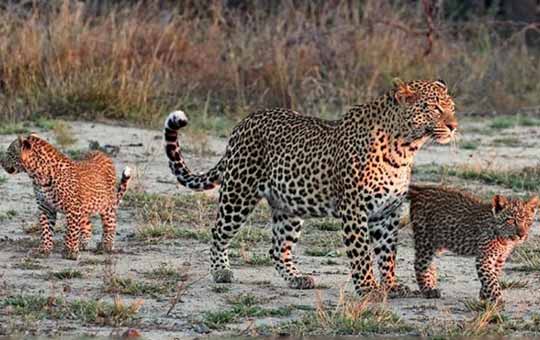Bera Leopard Sanctuary – A Hidden Wildlife Gem in Rajasthan
Nestled in the Aravalli Hills of southern Rajasthan, Bera Leopard Sanctuary is a unique wildlife destination that has gained fame for its thriving population of leopards living in close harmony with human settlements. Unlike conventional wildlife reserves, Bera is not a government-declared sanctuary but a protected area managed largely by local communities and private conservation efforts. Located in Pali district, near the Jawai Dam, Bera offers an extraordinary opportunity to witness the elusive and majestic leopard in its natural rocky habitat.
A Landscape Like No Other
The landscape of Bera is unlike the dense forests typically associated with leopard sightings. Instead, it features rugged granite hills, scattered scrublands, caves, and thorny bushes. These granite formations provide natural hiding spots and shelters for leopards, making it easier for them to adapt and thrive. The region is also dotted with quaint villages and Rabari shepherd settlements, who have coexisted with these wild cats for generations. This coexistence is a rare and fascinating aspect of Bera, where leopards are not just tolerated, but respected.
The Leopards of Bera
Bera is estimated to have one of the highest densities of leopards in India. The leopards here are highly territorial and have adapted to the rocky terrain rather than forested jungles. What makes Bera truly unique is the frequency and ease of leopard sightings. Unlike national parks where spotting a leopard may require luck and patience, Bera often rewards visitors with multiple sightings during short safaris. These safaris are conducted in open 4×4 vehicles, guided by experienced local trackers who know each leopard by behavior and territory.
Jawai Dam and Wildlife Diversity
The nearby Jawai Dam adds to the ecological richness of the region. This vast reservoir attracts a variety of migratory and resident bird species, making Bera a paradise for birdwatchers and nature lovers. Notable sightings include flamingos, cranes, bar-headed geese, and various species of ducks. The dam is also frequented by crocodiles, and the surrounding area is home to hyenas, jackals, jungle cats, and sloth bears.
A Unique Cultural Experience
One of the highlights of visiting Bera is interacting with the Rabari tribe, traditional semi-nomadic shepherds who wear striking red turbans and white dhotis. The Rabaris have lived in this region for centuries, herding livestock in the same areas roamed by leopards. Their deep respect for nature and harmony with wildlife makes Bera not just a destination for wildlife tourism but also a cultural experience.
Responsible Tourism and Conservation
Bera represents a successful model of community-driven conservation. Local families, many of whom have converted parts of their ancestral land into eco-lodges and homestays, are deeply involved in leopard conservation efforts. There are no fences or artificial enclosures; wildlife roams freely. Visitors are encouraged to follow sustainable tourism practices, respecting the fragile balance between man and nature.
When to Visit
The best time to visit Bera is between October and April, when the weather is pleasant, and wildlife activity is high. Summers can be extremely hot, while monsoons make the terrain slippery and less accessible.
Bera Leopard Sanctuary is a hidden jewel in Rajasthan’s wildlife map—where conservation meets community, and leopards rule the rocks. It’s an offbeat destination that promises thrilling safaris, cultural immersion, and the chance to witness one of nature’s most elusive big cats in a setting that’s both raw and remarkable.
